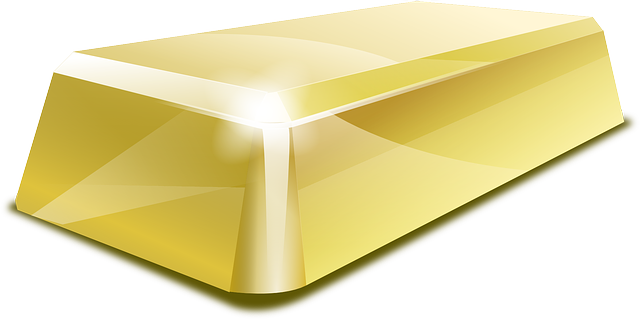Precious metals IRAs allow investors to diversify their retirement portfolios by adding physical gold, silver, platinum, and palladium. These metals must meet IRS fineness standards and be held through compliant custodians to maintain tax-advantaged status. Each metal offers unique investment qualities: gold for stability, silver for liquidity, platinum for industrial use and scarcity, and palladium for its role in the automotive industry. Investors should carefully weigh their financial goals and risk tolerance when investing, considering long-term investment strategies for gold, the liquidity of silver, the niche market influence on platinum, and palladium's dual purpose. A balanced precious metals IRA might include a mix of these metals in various forms, such as coins or bars, and should be reviewed regularly to ensure it aligns with one's investment objectives and risk profile. Precious metals IRA providers offer guidance, secure storage solutions, and assistance with compliance, making them crucial partners in this investment strategy. It's vital to select a provider with a strong track record for security, transparency, and customer service, and to understand their fee structure and the extent of insurance coverage for your investments.
Discover the enduring allure of precious metals as a cornerstone of diversified retirement wealth. This article delves into the realm of Precious Metals IRA companies, which facilitate the inclusion of tangible assets like gold, silver, platinum, and palladium within your retirement portfolio. We will navigate the intricacies of these investment options, spotlight leading custodians, and elucidate the legal framework governing their inclusion in IRAs. Additionally, we’ll explore strategic approaches to diversify your Precious Metals IRA for a robust financial future. Join us as we examine the pivotal role these metals can play in safeguarding and enhancing your retirement savings.
- Understanding Precious Metals IRA Investment Options
- Top Precious Metals IRA Companies Overview
- Comparing Custodians for Precious Metals IRAs
- Eligibility and Legalities of Physical Metals in Retirement Accounts
- Strategies for Diversifying Your Precious Metals IRA Portfolio
Understanding Precious Metals IRA Investment Options

Precious metals IRAs offer investors a unique opportunity to diversify their retirement portfolios with tangible assets. These accounts allow for the inclusion of physical gold, silver, platinum, and palladium as part of one’s retirement savings strategy. Investors can choose from various forms of these metals, including bullion coins, bars, and rare coins, each with its own set of characteristics and investment appeal. Gold and silver are often favored for their historical role as safe-haven assets during times of economic uncertainty. Platinum and palladium, while less commonly held in IRAs, are also valued for their industrial applications and finite supply, which can contribute to their price stability and growth potential.
When considering a precious metals IRA, it’s crucial to understand the different investment options available and how they align with your financial goals and risk tolerance. For instance, gold is traditionally seen as a long-term store of value, while silver often offers higher liquidity and can be more responsive to market fluctuations. Platinum tends to be more expensive per ounce but has a smaller market, which can influence its price dynamics. Palladium, frequently used in the automotive industry for emission control systems, can serve as both an industrial and investment asset. Each metal has its own IRS-approved criteria that must be met for inclusion in an IRA, so it’s essential to work with a reputable precious metals IRA provider who can guide you through the process and help ensure compliance with all regulations. This will enable investors to make informed decisions and effectively incorporate physical precious metals into their retirement savings plans.
Top Precious Metals IRA Companies Overview

Investing in precious metals through an Individual Retirement Account (IRA) offers a traditional investment strategy with a tangible asset component. This approach can serve as a hedge against inflation and market volatility, potentially enhancing diversification within a retirement portfolio. Top precious metals IRA companies specialize in facilitating the inclusion of physical gold, silver, platinum, and palladium into one’s retirement savings. These firms guide investors through the process of establishing a self-directed IRA that allows for such investments, ensuring compliance with IRS regulations. They provide a selection of precious metal products that meet the IRS’s purity standards for inclusion in an IRA, and they offer secure storage options, either through third-party depositories or direct shipping to the custodian. These companies are distinguished by their expertise, competitive pricing, customer service, and transparent transaction processes. Investors benefit from their guidance in navigating the complexities of incorporating physical precious metals into their long-term savings plans, with the aim of securing financial stability for retirement.
Comparing Custodians for Precious Metals IRAs

When evaluating precious metals IRA companies, it’s crucial to compare their custodial services as they play a pivotal role in managing and safeguarding your retirement assets. Each custodian has its own set of policies, fee structures, and the range of supported precious metals. Investors should scrutinize the custodian’s reputation for security, transparency, and customer service. A reputable custodian will provide detailed reporting and facilitate the purchase, storage, and distribution of your precious metals within IRS regulations. The custodial fees can vary significantly between companies; some may charge flat annual fees, while others might base their costs on the value of your account or the number of transactions. Additionally, consider the type of storage options offered by the custodian—whether it’s segregated (individual possession) or commingled (pooled with other clients). Segregated storage offers more security as each metal bar or coin is individually owned and insured, whereas commingled storage can be more cost-effective but comes with shared responsibility. By carefully comparing the custodial aspects of precious metals IRA companies, investors can make an informed decision that aligns with their investment goals and risk tolerance. It’s advisable to review customer feedback, understand the insurance coverage for stored assets, and ensure compliance with IRS rules when selecting a custodian for your precious metals IRA.
Eligibility and Legalities of Physical Metals in Retirement Accounts

Precious metals IRAs offer investors a unique opportunity to diversify their retirement portfolios with physical gold, silver, platinum, and palladium. To be eligible for such an account, individuals must have an existing IRA or 401(k) plan that can be rolled over into a self-directed IRA specializing in precious metals. The Internal Revenue Service (IRS) provides specific guidelines on the types of physical metals permissible within these accounts. Generally, the metals must be categorized as legal tender and meet purity standards set by the IRS. Gold must be 99.5% pure or higher, while silver should be 99.9% pure for eligibility. Platinum and palladium have their own fineness requirements: 99.95% for platinum and 99.97% for palladium. Investors must work with IRS-approved custodians or dealers to ensure compliance with these regulations. The legalities involve not only the types of metals but also how they are handled, stored, and reported within the account. It is imperative that all transactions adhere to the rules set forth by the IRS to maintain the tax-advantaged status of the retirement account.
Strategies for Diversifying Your Precious Metals IRA Portfolio

When considering strategies for diversifying your Precious Metals IRA portfolio, it’s crucial to balance your holdings between different types of precious metals to mitigate risks. Gold and silver often serve as cornerstones due to their historical demand and stability. Investors might allocate a portion of their portfolio to platinum and palladium for exposure to different market dynamics; these metals are highly valued in industrial applications, which can provide a hedge against economic shifts.
Another strategy involves considering the form in which you hold these metals. While coins and bars are popular, there are also options like rare coin collectibles that can offer both investment value and collector’s appeal. Diversification can extend to including precious metals from different geographical regions or sourced from conflict-free and environmentally responsible mines. Additionally, the ratio of metals within your portfolio can be adjusted over time to respond to market trends and personal financial goals. Regularly reviewing and rebalancing your Precious Metals IRA portfolio is a key step in maintaining a well-diversified investment strategy that aligns with your risk tolerance and retirement objectives.
Investing in precious metals through an IRA can serve as a valuable diversification strategy within your retirement portfolio. By partnering with specialized IRA companies, investors can seamlessly integrate physical gold, silver, platinum, and palladium into their long-term savings plans. This article has outlined the key aspects of investing in precious metals via an IRA, from understanding your investment options to the legal framework governing these assets within retirement accounts. Choosing the right custodian is crucial for securing your investments and ensuring compliance with IRS regulations. With a well-thought-out strategy, you can effectively diversify your Precious Metals IRA portfolio, potentially enhancing your financial security in retirement.
